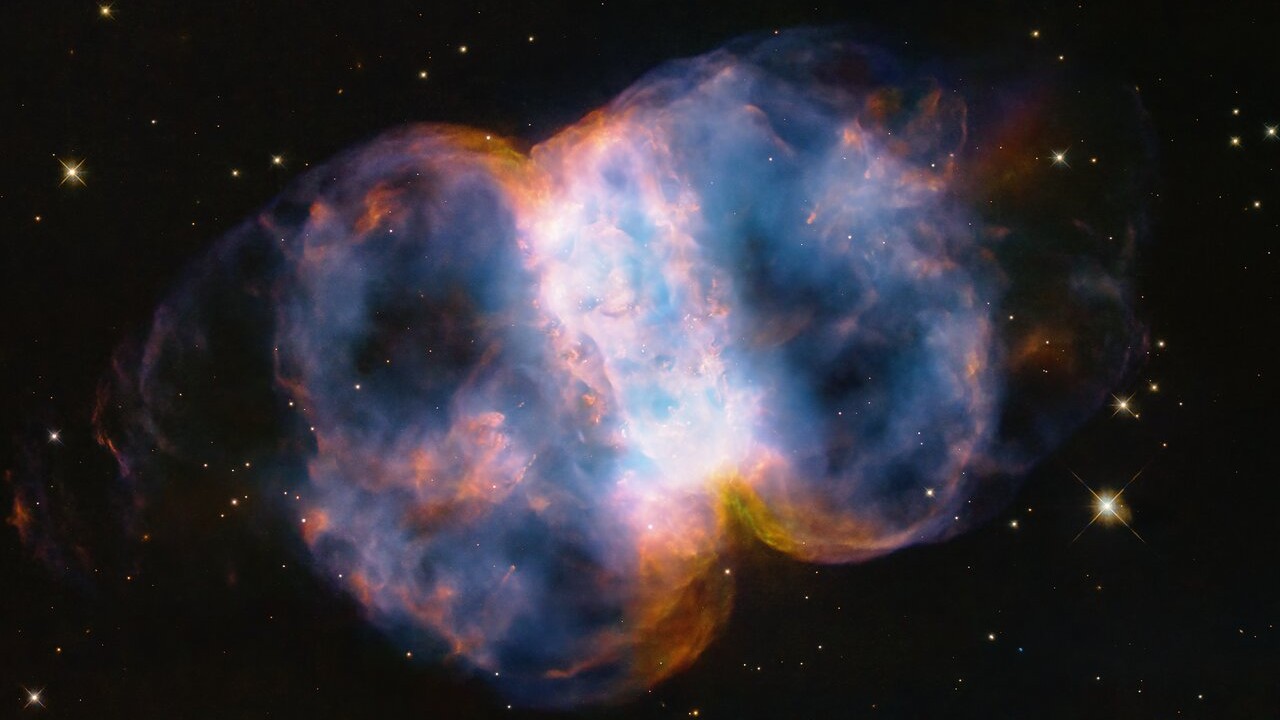
What it is: The Little Dumbbell Nebula (also known as Messier 76, M76, NGC 650/651, the Cork Nebula and the Barbell Nebula), a planetary nebula
Where it is: 3,400 light-years away, in the constellation Perseus
When it was shared: April 23, 2024
Why it's so special: This is a new image of the Little Dumbbell Nebula (M76), a planetary nebula that's a popular target for telescopes in summer in the Northern Hemisphere.
Issued to mark the 34th anniversary of the Hubble Space Telescope's launch, which occurred on April 24, 1990, the image comes from the newest data in an archive of 184 terabytes stored at the Space Telescope Science Institute in Baltimore.
The Little Dumbbell Nebula is a planetary nebula, which, contrary to what the name suggests, is not the remains of a planet. Rather, it's an expanding shell of gas and dust ejected from a red giant star as it collapsed into a dense, hot white dwarf star. (The shell’s bright, round shape may have been reminiscent of a planet when viewed through early telescopes.)
Hubble's new image shows the Little Dumbbell Nebula as two lobes of glowing gas and dust on both sides of a central bar. Scientists think the rings were caused by a second star that the central white dwarf star has since consumed.
That white dwarf is a special case. At 216,000 degrees Fahrenheit (120,000 degrees Celsius) — 24 times hotter than the sun's surface — it's one of the hottest white dwarf remnants known, European Space Agency representatives wrote in a statement. It's visible as a pinprick of light in the nebula's center.
The rest of the colorful nebula comprises the dust and gas ejected by the central star at 2 million mph (3.2 million km/h). It's glowing because of ultraviolet radiation from the star, with red denoting nitrogen and blue showing oxygen.
The Little Dumbbell Nebula will be visible for about 15,000 more years before the last of its gas vanishes into space, according to the statement.







